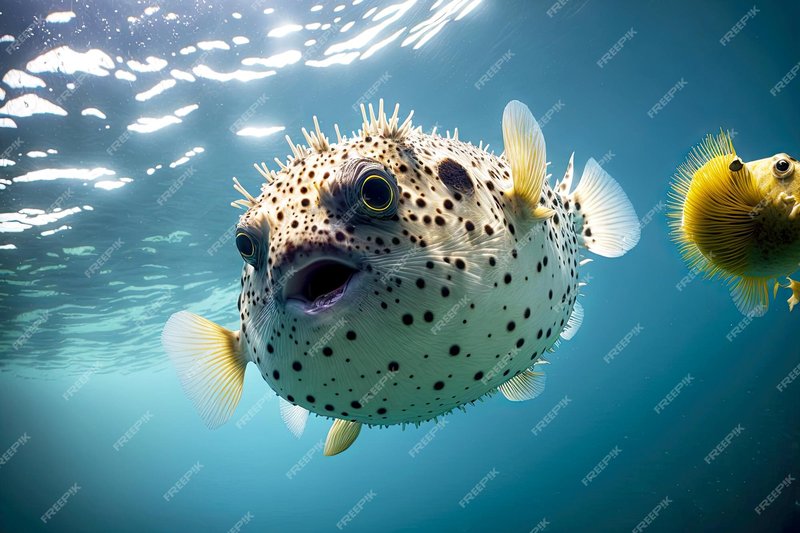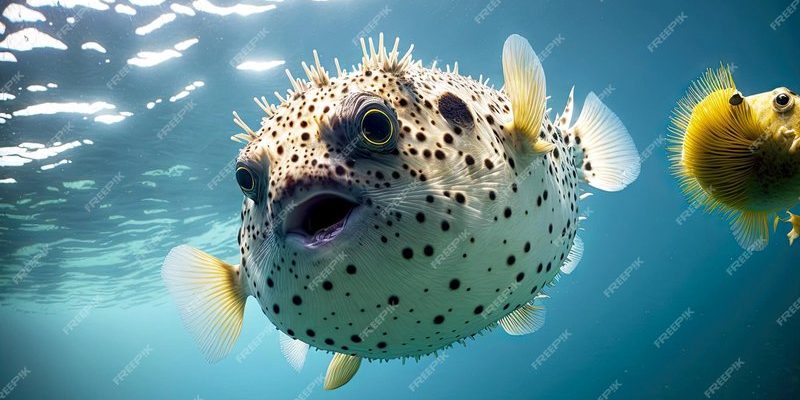
Pufferfish are not only unique due to their ability to inflate but also because of their potent toxin, tetrodotoxin. This toxin makes them unpalatable to most predators. However, their survival isn’t just about their defenses; it’s also about the environment they live in. Various threats can disrupt their habitats and impact their populations—so let’s explore what these threats are.
Overfishing: A Major Concern
Overfishing is one of the biggest threats to pufferfish populations. As demand for sushi and exotic seafood rises, pufferfish are often caught in large numbers. But here’s the catch—many people don’t realize that there are strict regulations regarding which pufferfish species can be harvested. Unsustainable fishing practices can lead to the depletion of their populations, disrupting their ecosystem.
Think about it this way: if you remove a significant number of pufferfish from the ocean, it’s like taking a puzzle piece out of a completed picture. The balance of the ecosystem is disrupted, affecting not only pufferfish but also other species that rely on them. Pufferfish play a crucial role in their ecosystems, and when they’re overfished, it creates a ripple effect that impacts the whole community.
Additionally, some regions practice illegal fishing methods, which further threaten pufferfish populations. These methods can lead to bycatch, where non-target species are also caught and often discarded, causing further ecological harm. This unsustainable fishing can’t continue if we want a future for pufferfish and the broader marine environment.
Habitat Destruction: A Growing Crisis
Habitat destruction is another critical threat to pufferfish. Coral reefs, seagrass beds, and mangroves are essential for their survival, providing food and shelter. However, human activities such as coastal development, pollution, and climate change are wreaking havoc on these vital habitats.
Coastal development for tourism and urban expansion often involves dredging, which destroys the underwater landscapes these fish call home. Picture a bustling beach resort replacing a vibrant coral reef—it’s a loss for pufferfish that depend on those habitats.
Pollution also plays a massive role. Runoff from agriculture, plastic waste, and untreated sewage can contaminate the waters where pufferfish live. This pollution not only harms the fish but also affects their food sources, leading to malnutrition and weakening their populations.
Climate Change: The Silent Threat
You might be wondering how climate change affects pufferfish. The truth is, it impacts them in multiple ways. As ocean temperatures rise, pufferfish experience stress, leading to changes in their breeding patterns and migration habits. Warmer waters can force them into less hospitable areas, making it harder to find food and mates.
Additionally, ocean acidification, resulting from increased carbon dioxide emissions, poses a significant threat. As the water becomes more acidic, it affects marine life, especially creatures with calcium carbonate shells, which can impact the entire food web pufferfish rely on.
Without stable habitats, adequate food, and suitable breeding grounds, pufferfish populations may dwindle, threatening their long-term survival. Just like us, these fish need a healthy and balanced environment to thrive.
Predation and Competition: Natural Challenges
While pufferfish have their unique defense mechanisms, they still face threats from natural predators. Larger fish, birds, and even some species of sea turtles have developed ways to eat pufferfish despite their toxins. Just because they’re tough doesn’t mean they’re invincible.
In addition to predation, pufferfish also contend with competition for resources. As habitats shrink due to human activity and climate change, pufferfish may have to compete with other fish for food and space. This competition can be particularly severe in areas where their populations are already stressed.
Strong competition for limited resources can weaken pufferfish populations and make them more vulnerable to other threats. It’s a tough world out there, and these challenges can lead to significant declines in their numbers if not addressed.
Pollution: An Ongoing Battle
Pollution is not just a buzzword; it’s a real killer for marine life, including pufferfish. From plastic debris to chemicals, the oceans are becoming increasingly toxic. Pufferfish are particularly susceptible to these pollutants, which can accumulate in their bodies over time.
For instance, heavy metals and chemical runoff can interfere with the pufferfish’s reproductive systems. This means fewer baby pufferfish survive to adulthood, leading to declining populations. The impact of pollution can often go unnoticed until it’s too late, making it a silent but deadly threat.
Just think about how our own health can be affected by what we eat. Pufferfish are in a similar predicament. Contaminated food sources affect not only their well-being but also the health of the entire marine ecosystem they inhabit.
Conservation Efforts: Protecting Pufferfish
So, what can we do to help pufferfish? Thankfully, conservation efforts are underway to protect these remarkable creatures. Organizations are working to create sustainable fishing practices and establish marine protected areas (MPAs) where pufferfish can thrive without the threat of overfishing.
Educating the public is also crucial. When people understand the importance of pufferfish in the ecosystem and the threats they face, they’re more likely to make informed choices about the seafood they consume. Supporting sustainable seafood programs can help ensure that pufferfish populations are not overexploited.
Additionally, habitat restoration projects, such as rebuilding coral reefs and seagrass beds, are essential for the survival of pufferfish. These efforts help rebuild the ecosystems that pufferfish depend on, giving them a fighting chance against the many threats they face.
Final Thoughts on the Future of Pufferfish
Honestly, pufferfish are more than just intriguing creatures; they’re a vital part of marine ecosystems. The threats they face—from overfishing and habitat destruction to pollution and climate change—can seem overwhelming. But with awareness comes action. We can all play a role in protecting these unique fish and their environments.
By learning about the challenges pufferfish face and supporting conservation efforts, we can help ensure that future generations will also have the chance to marvel at these fascinating fish. It’s a shared responsibility to keep our oceans and their inhabitants safe. Let’s work together to secure a brighter future for pufferfish and the oceans they call home.

